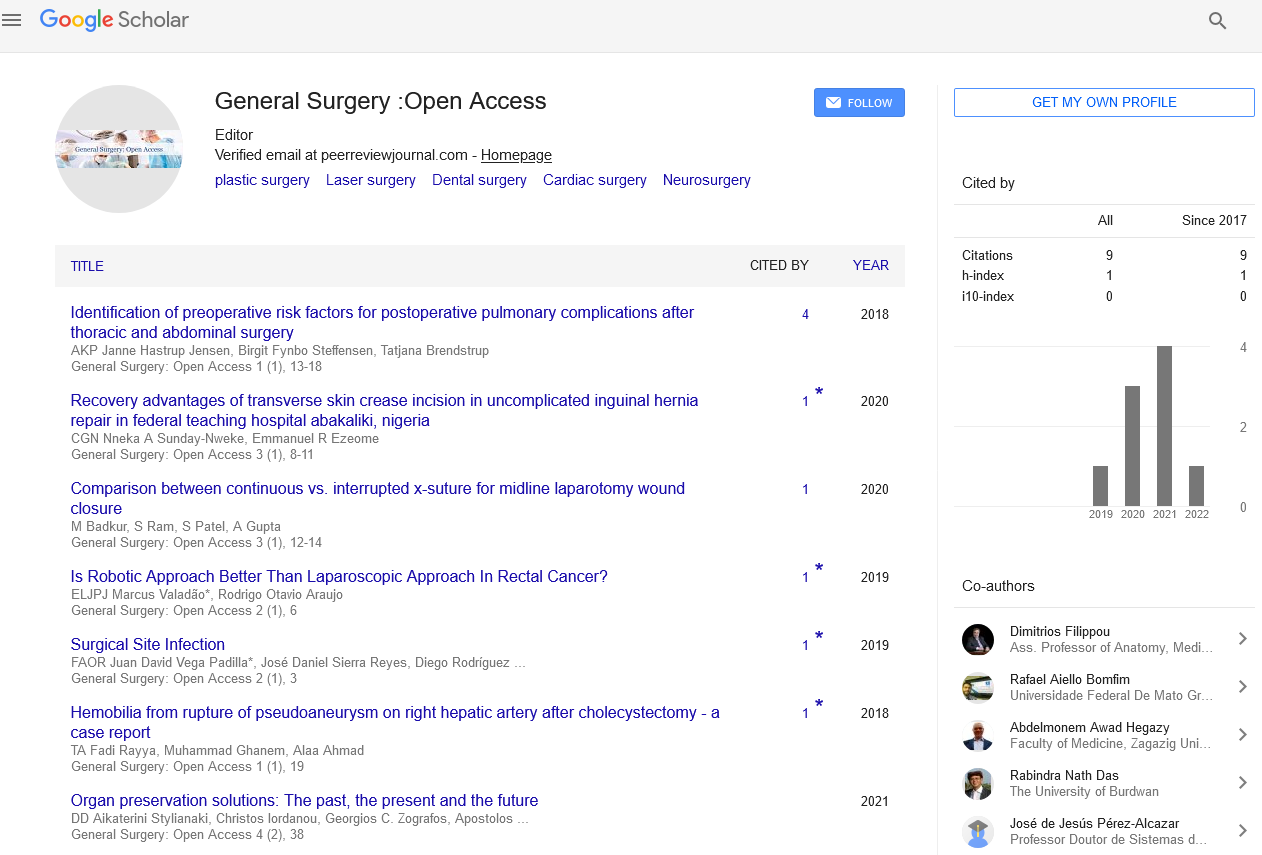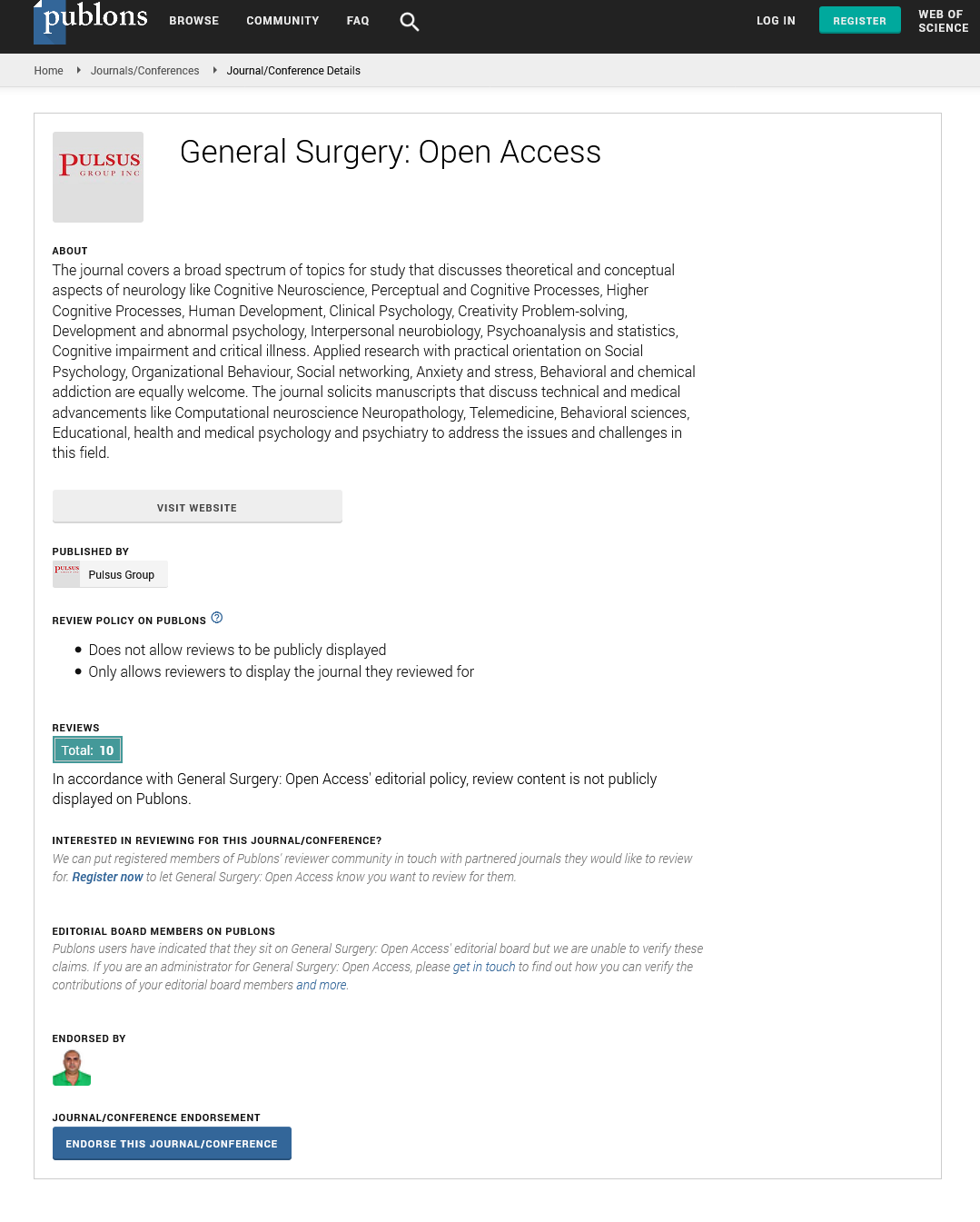Short note on abdominal aortic aneurysm
Received: 05-Nov-2021 Accepted Date: Nov 19, 2021; Published: 26-Nov-2021
Citation: Novello M. Diagnosis and management of femoral hernia. Gen Surg: Open Access 2021;4(6):e019.
This open-access article is distributed under the terms of the Creative Commons Attribution Non-Commercial License (CC BY-NC) (http://creativecommons.org/licenses/by-nc/4.0/), which permits reuse, distribution and reproduction of the article, provided that the original work is properly cited and the reuse is restricted to noncommercial purposes. For commercial reuse, contact reprints@pulsus.com
Description
Femoral hernias are less common than inguinal hernias. Identifying a femoral hernia is an important factor in assessing patients with an inguinal hernia, as repair options and urgency may differ from those of the more common inguinal hernia. This activity explores the causes, appearance, and diagnosis of femoral hernia and highlights the role of interprofessional team in its management. Ultrasonography of the abdomen and groin area can confirm the diagnosis or establish a diagnosis if suspicion of a femoral hernia is high but no bulge is evident on physical examination. Imaging techniques can show defects in the muscle wall as well as protruding tissue. Small, asymptomatic femoral hernias may not require special treatment. Moderate to large femoral hernias require surgical repair, especially if they are causing discomfort. Surgical hernia repair is performed under general anesthesia. This means that a person can sleep and feel no pain during surgery. Repair of a femoral hernia can be done either as open surgery or laparoscopic surgery. Laparotomy requires a larger incision and longer recovery time. Laparoscopic surgery uses 3-4 keyway-sized incisions that minimize bleeding. A hernia is defined as an abnormal protrusion of an organ or tissue through a defect in the surrounding wall. Hernia defects can appear in different parts of the abdominal wall, but most commonly in the groin. Hernias can occur where the aponeurosis and fascia are not covered by striated muscle. As a result, the peritoneum or hernia sac can protrude from the opening or neck of the hernia. Surgical intervention is the only treatment. In many cases, it is advisable to repair the femoral hernia at the time of diagnosis. This is primarily due to the greater complications such as incarceration or strangulation, compared to the more common inguinal hernias. Finding strangulation or obstruction with respect to the timing of treatment or femoral hernia repair is a surgical emergency and should not be delayed. Femoral hernias can be repaired with standard inguinal hernias, open preperitoneal approaches, or minimally invasive (laparoscopic or robotic laparoscopic) approaches. Regardless of technique or approach, the most important steps in repairing a femoral hernia are incision and reduction of the hernia sac and closure of the defect or obstruction of the defect by inserting a prosthetic mesh. If there are clinical concerns about incarceration or strangulation, the hernia sac should be opened and the contents should be examined. The lacunar ligament can be divided if necessary to facilitate repositioning of the hernia sac and its contents. In the case of intestinal dysfunction, incision, or general contamination due to infection or bacterial exposure concerns in the surgical field, placement of the prosthetic mesh should be avoided. Mesh infections are rare but serious complications that are difficult to treat and often require explanation for the infected prosthesis. Infection at the surgical site is estimated to be 2% to 4% for selective inguinal or femoral hernia repair. Many repairs are available, which strongly suggests that there is no "best repair method". In addition, the major differences in the treatments performed are due to cultural differences between surgeon’s different reimbursement system and differences in resources and logistical capabilities.






